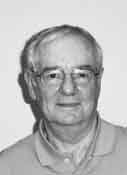 | John Rawson, Consultant, is part of the team of Wichita sales staff and RF radio technicians that is grouped with shops located in Lincoln and Omaha, Nebraska. FirstWireless, Inc. offers client consultations and demos, service, maintenance and installation, radio rentals, FCC licensing, GPS tracking and warranty administration. FirstWireless, Inc. specializes in the sales, service and rental of two-way radios, accessories and applications.
As a Premier Service Partner with Motorola, the trained sales staff and radio technicians keep customers up-to-date with the most current technical advances in radio systems and devices. Visit www.firstwirelessinc.com for more information or call at (316) 265-2290. |
Electronics
2010-07-01 12:39:00
Digital future for professional two-way radio: series (part one)
hat is two-way radio?
Answer: Two-way voice was one of the first commercial applications of radio technology. In 1933, the first two-way mobile radio system was installed in patrol cars of the Bayonne, New Jersey police department. Since then, two-way radio has moved beyond the realm of public safety to become an invaluable tool for mobile professionals in a wide range of enterprises.
The term "two-way radio" conjures up a variety of images. Many people think of public safety officers using expensive equipment and licensed spectrum to convey mission-critical information at the site of an incident. Others think of hobbyists and sales clerks using low-cost, low-power "walkie talkies" in the unlicensed spectrum to keep in touch over relatively short distances. But there’s a vast and growing market between these two extremes for professional users who need high-quality yet affordable equipment that takes advantage of the power, range and coexistence characteristics of licensed channels.
In transportation, energy, government, retail, hospitality and many other industries, licensed professional two-way radio systems offer capabilities that no other mobile technology can provide. Unlike competing technologies, only two-way radio can offer professionals instant, private and cost-effective communication in virtually any environment — anywhere and anytime. With two-way radio, there’s no need to deploy supporting infrastructure in a field situation, or to rely on subscriber-based public networks that may be under-supported or even completely unavailable.
For most of its history, two-way radio has been an analog medium, and to this day the vast majority of systems are still analog. But that’s about to change. In the same way that digital technology has transformed other media, it’s now revolutionizing the way mobile professionals communicate in the field. Like the digitization of music, TV and other traditionally analog media, digital two-way radio technology offers several advantages over the analog systems of the past.
For example, compared to analog two-way radio, digital two-way radio can offer greater spectral efficiency for higher calling capacity, enhanced voice quality at the farthest margins of the RF range, and more reliable coverage — making it easier to hear and understand conversations, even at long range and in difficult environments. Digital two-way radio also offers many features and capabilities that analog simply can’t provide.
For example, digital systems can:
• Provide enhanced signaling for user-friendly operation and advanced features
• Enable longer battery life in the field by requiring less transmit power, depending on the specific transmit methods and power-management technologies used in the device
• Enable flexible privacy between individual users and groups, without degrading voice quality or requiring configuration of add-on hardware
• Combine voice communication and wireless data applications in the same device, literally transforming the way field workers get the job done
We will be presenting here a series of articles that gives an overview of two-way digital technology and the advantages it offers to mobile professionals in industries such as transportation, education, building construction and manufacturing, energy and utilities, private security, public safety and local government, and service-intensive businesses such as hotels, motels and casinos.
We’ll explore unique needs of these mobile workers, and discuss the ways that digital technology serves these needs in ways that analog radio can’t.
Next month we’ll answer the question, "Why Two-Way Radios?"
*Information obtained from "The Future of Professional Two-way Radio: Digital" whitepaper by Motorola. Email us at sales@firstwirelessinc.com for the complete paper delivered as a pdf file.
John Rawson, Consultant, is part of the team of Wichita sales staff and RF radio technicians that is grouped with shops located in Lincoln and Omaha, Nebraska. FirstWireless, Inc. offers client consultations and demos, service, maintenance and installation, radio rentals, FCC licensing, GPS tracking and warranty administration. As a Premier Service Partner with Motorola, the trained sales staff and radio technicians keep customers up-to-date with the most current technical advances in radio systems and devices. Visit www.firstwirelessinc.com for more information or call us at (316) 265-2290.


